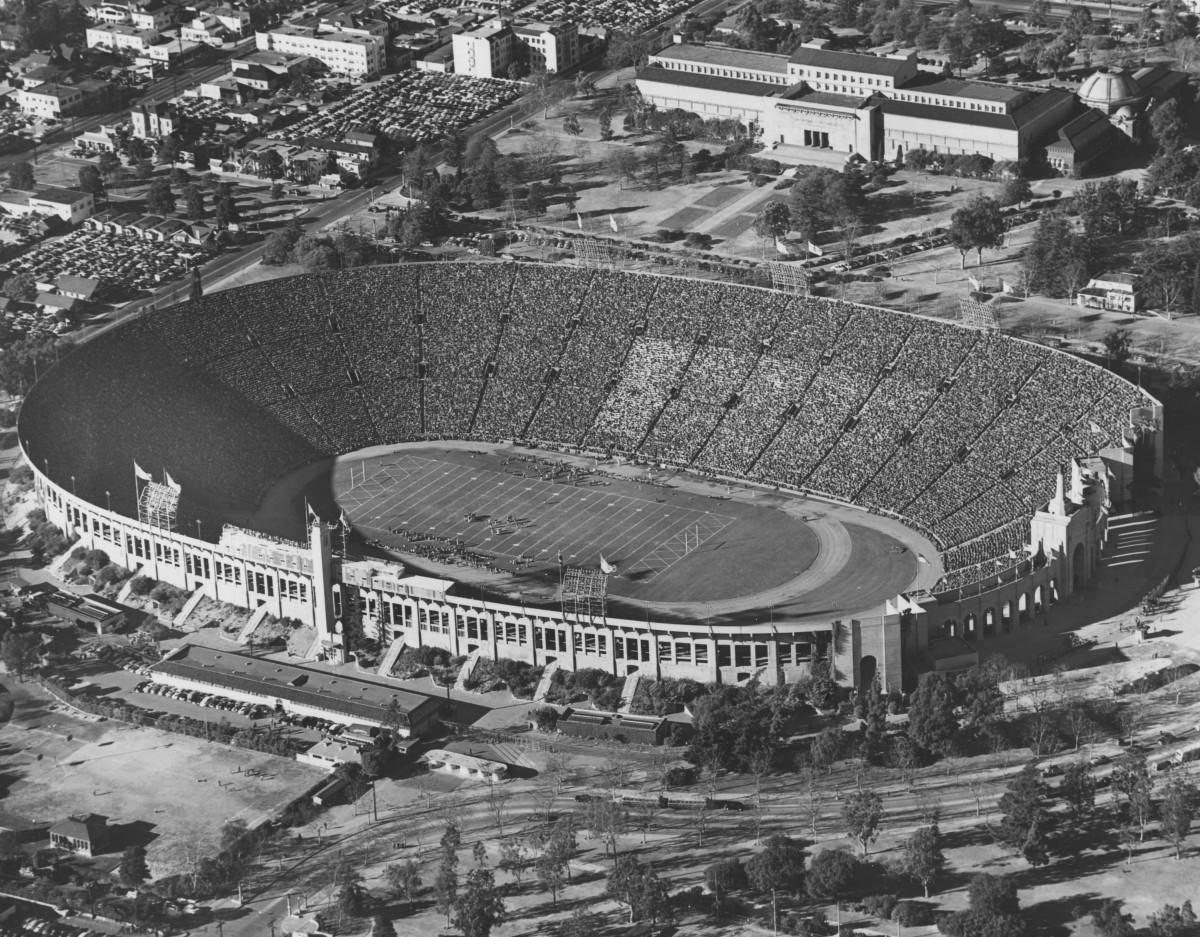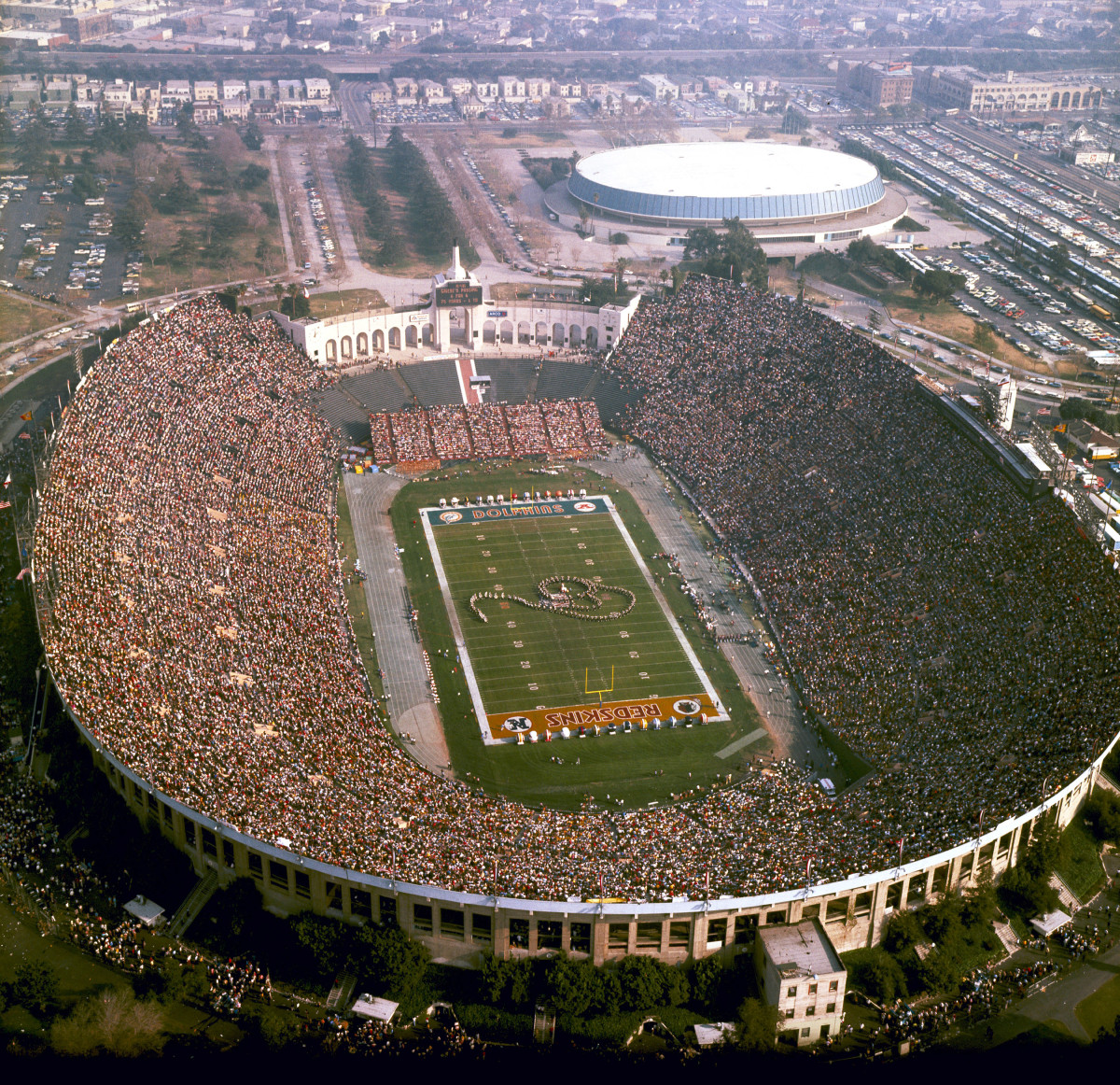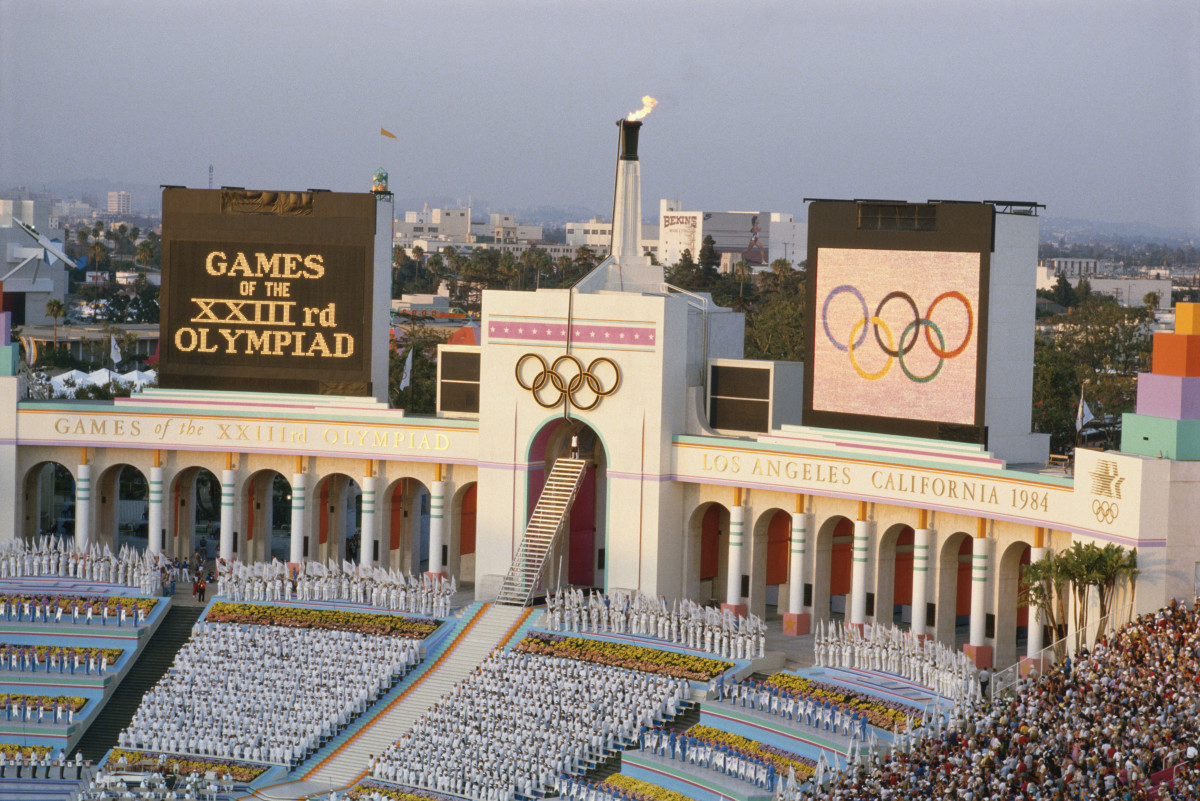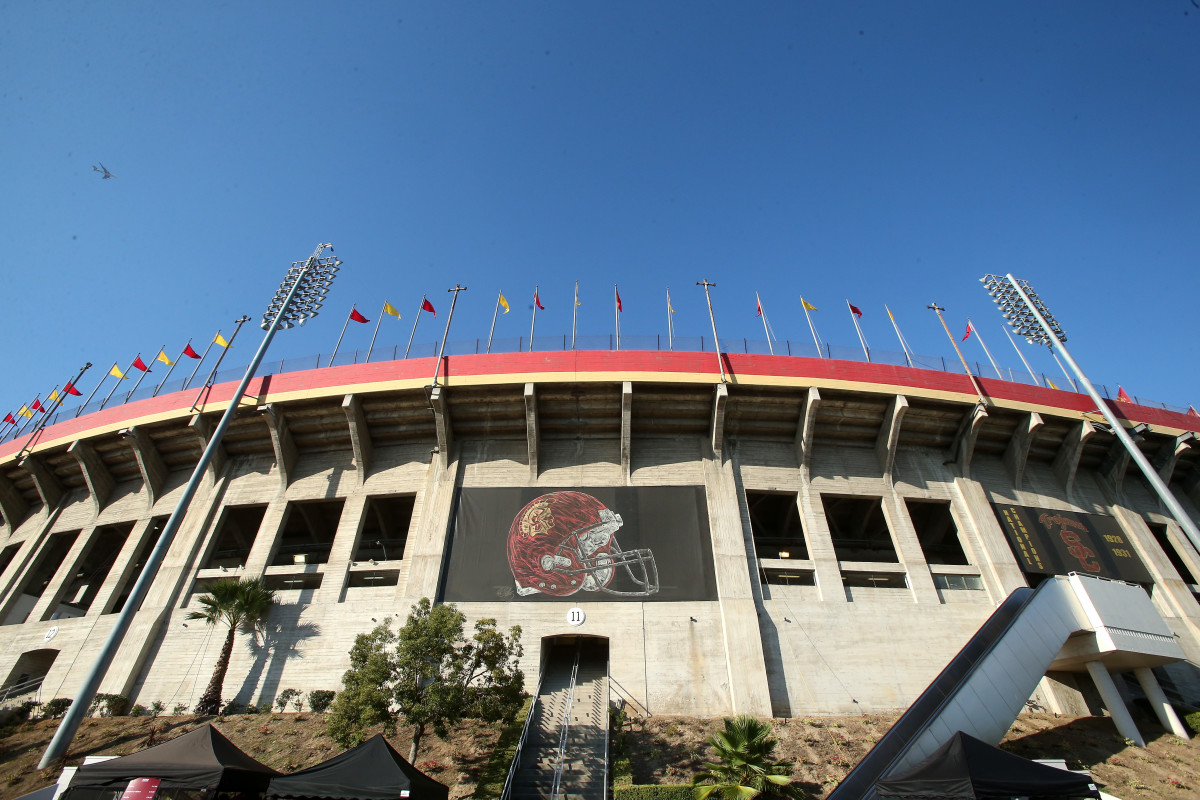Keeping up with Oregon: USC starts L.A. Coliseum modernization project

Keeping up with Oregon: USC starts L.A. Coliseum modernization project

USC football in 1948

The 1973 Super Bowl

The 1984 Olympics

USC football in 2013
Ninety years holds history, but it doesn’t always wow recruits seeking slick locker rooms or bolster the coffers of athletic departments needing cash from premium suites. Such is the story for the University of Southern California, which finalized a new 98-year lease on the historic L.A. Coliseum this September.
Now comes the modernization.
USC hired international design firm DLR Group to turn the L.A. Coliseum from a historical landmark to a modern facility that allows the Trojans to keep pace with not only the Pac-12, but the entire nation.
“It does not have revenue-generating opportunities and is not up to date as far as student-athlete spaces,” Don Barnum, DLR Group principal, tells SI.com. “When you bring in recruits, you are competing with fantastic facilities at Oregon, for instance. The Coliseum is an unbelievable building that has got to carry a lot of weight, but a lot of recruits care about, 'What kind of cool clothes am I going to get? And how nice is my locker room?' ”
Cue the menu of design options DLR will deliver in about six months for the 92,000-seat sloping bowl that became the first stadium to host two Olympics (1932 and 1984) and has housed USC football since opening in 1923.
NEWCOMB: A look inside Baylor's $260M new stadium
Tricking out the locker rooms will prove easy. But Barnum expects to devise dozens of options for USC to consider: from cantilevering a new seating deck so the seats aren’t so far away from the playing field—that will likely be the costliest redesign option—to fielding multiple choices for premium seating.
But he’ll have to do it all without stepping on the historic nature of the building—it is listed on both the National Register of Historic Places and designated as a National Historic Landmark—that includes the existing façade and the “peristyle” arches that mark the entrance on the west side and feature columns and two Olympic statues.
“Really we will just start brainstorming ideas to move seats closer, improve toilets and concessions and create dozens and dozens of options to look at,” Barnum says about forming a mix of ideas all coming with differing price tags. As part of the new lease agreement, USC must spend at least $100 million on facility upgrades.
ELLIS: Texas A&M begins $450M renovation of Kyle Field
While we know the student-athlete spaces will get a major makeover and can expect a selection of premium hospitality amenities, the way fans view the game in the Coliseum will likely change, too. The old-style footprint has “a lot of seats that are not good football-viewing seats.” But the change will probably start with the seats themselves.
“I can’t even tell you how old the seats are,” Barnum says. “What you are sitting on for three hours hasn’t been improved in 30 or 40 years.” Those seats may even move around. The vast 92,000-seat venue will seat less in the new configuration, which could include a complete maneuvering of the bowl or the field.
The stadium was originally designed with a track around the playing surface, but the track has since been removed and the field has shifted west, allowing USC to place bleacher seating on the east end. That won’t fly in a new design. Bleacher seats just aren’t that impressive to recruits or boosters. And they don’t have a 90-year-old story to tell.
Tim Newcomb covers stadiums, design and technology for Sports Illustrated. Follow him on Twitter at @tdnewcomb.
